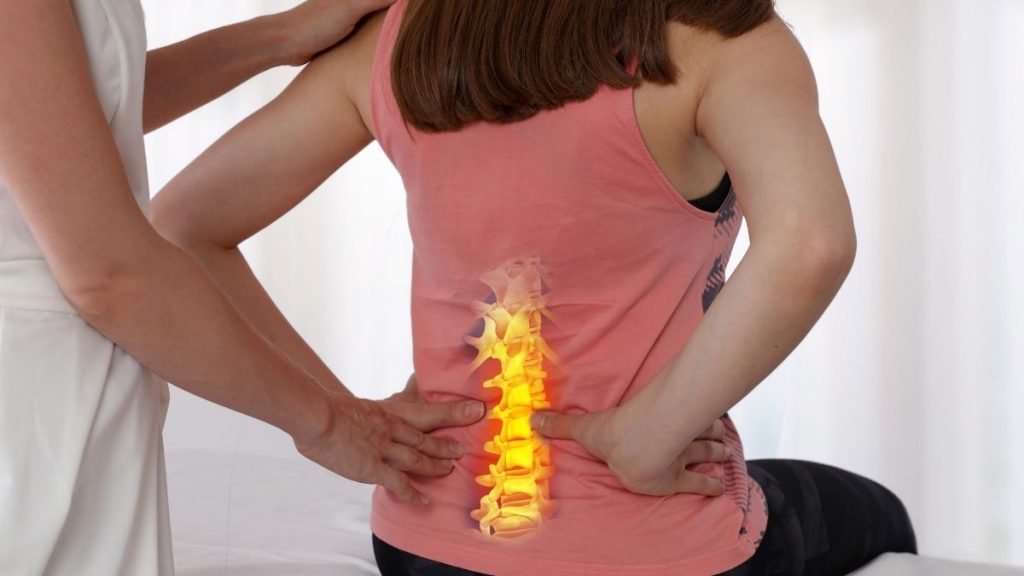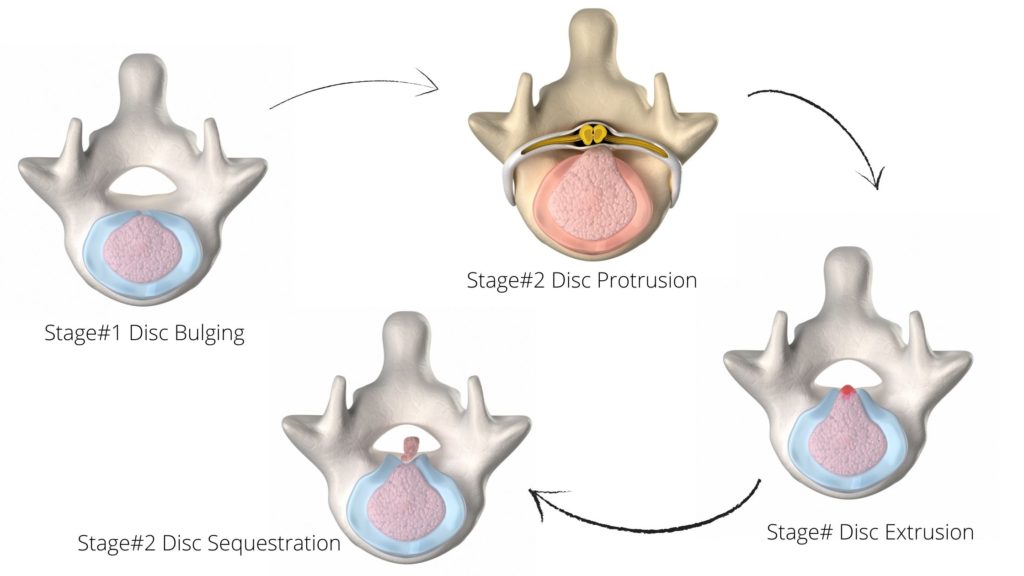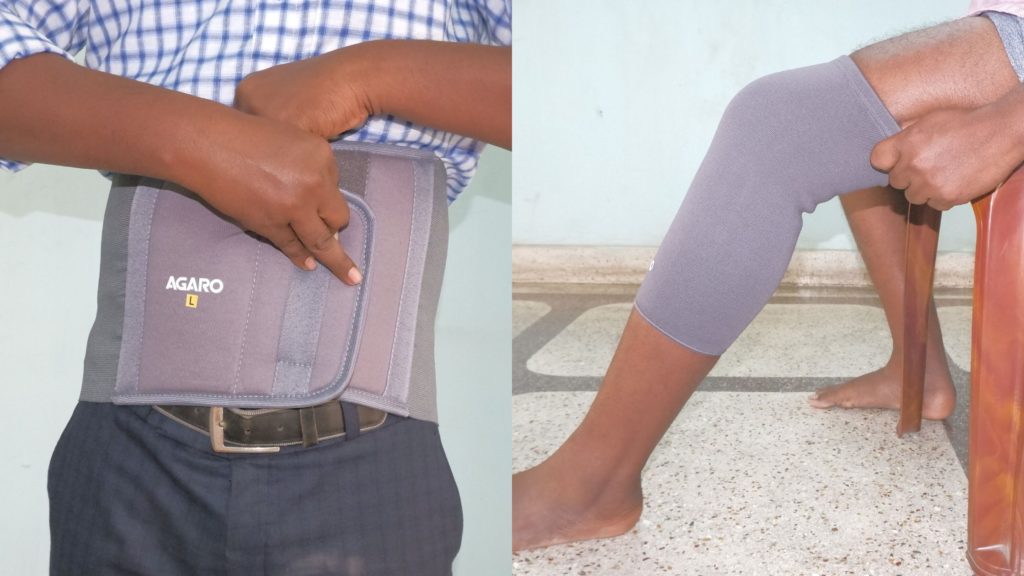Last updated on February 8th, 2025 at 01:40 pm
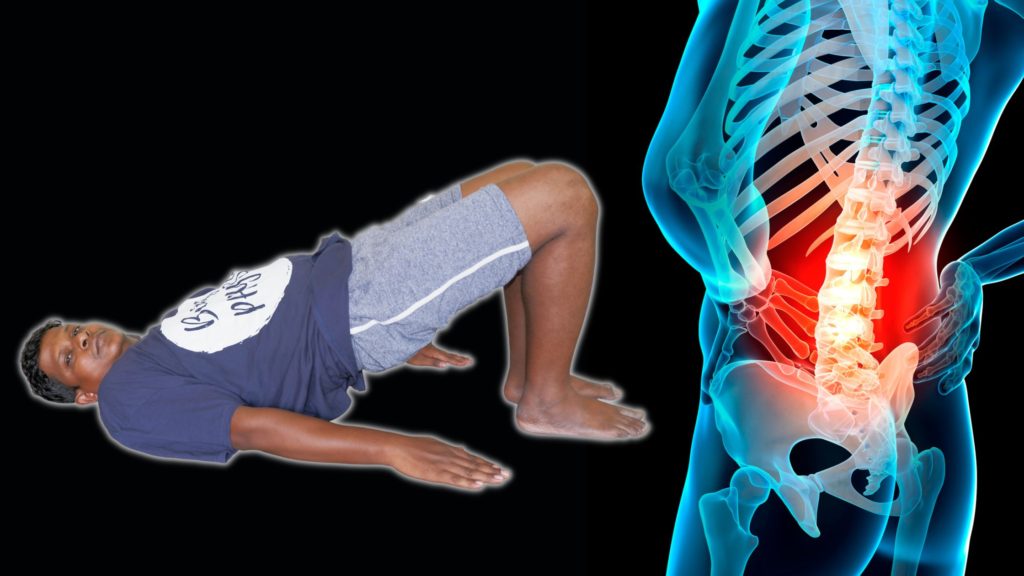
- Spondylolisthesis is a condition in which the vertebrae in the lower back slip ahead of the adjacent lower vertebrae.
- It can cause lower back pain, tingling, and numbness in the legs.
- The condition is classified into 5 grades based on the degree of slippage.
- Physiotherapy and exercises can manage the first two grades of spondylolisthesis.
Spondylolisthesis is a condition in which the vertebrae in the lower back slip ahead of the adjacent lower vertebrae.
This can cause lower back pain, tingling, and numbness in the legs. Based on the degree of slippage, it is classified into 5 grades.
Physiotherapy and exercises can manage the first two grades of spondylolisthesis. This article will cover the easy yet effective exercises to treat spondylolisthesis.
But first, let’s explore the different grades of spondylolisthesis to understand these exercises better.
Grades of spondylolisthesis

Spondylolisthesis is a condition in which the vertebral body of our spine slips forward in relation to the adjacent lower vertebral body. It can be caused by trauma or degenerative diseases.
Degenerative spondylolisthesis is more common in both men and women after age 501.
Traumatic spondylolisthesis, which can happen at any age, is typically caused by a fall injury or improper use of a seat belt. This degree of slippage is categorised into five grades.
The lower grades of grade 1 or grade 2 can be managed conservatively with exercises, and higher grades may require surgical intervention.
The spondylolisthesis grade depends on the location of the posteroinferior corner of the vertebra above2.
These grades are:
- grade I: 0-25%
- grade II: 26-50%
- grade III: 51-75%
- grade IV: 76-100%
- grade V: >100%
Physical therapy exercises for lumbar spondylolisthesis
The lumbar spondylolisthesis exercises we will learn are core exercises that can help stabilise the lumbar area and strengthen the lower back muscles to prevent further sliding.
But, before proceeding, let’s first understand the condition of Anterior Listhesis or Spondylolisthesis.
- Our spine consists of vertebral bodies stacked on top of each other.
- To keep each spine in place, a spinous process and the Pars interarticularis joint keep the bone fixed.
- However, due to sudden falls or jerks experienced while travelling, the Pars interarticularis joint can fracture, causing the spine to slip forward.
- In some cases, it may slip backwards, but in most cases of Listhesis, it slips forward.
- This condition leads to pain; if nerve compression occurs, it can cause tingling and numbness in the legs.
- Core exercises help strengthen the muscles around the lower back, which helps stabilize it. Let’s start with the bridging exercise.
1) Bridging exercise for lumbar spondylolisthesis
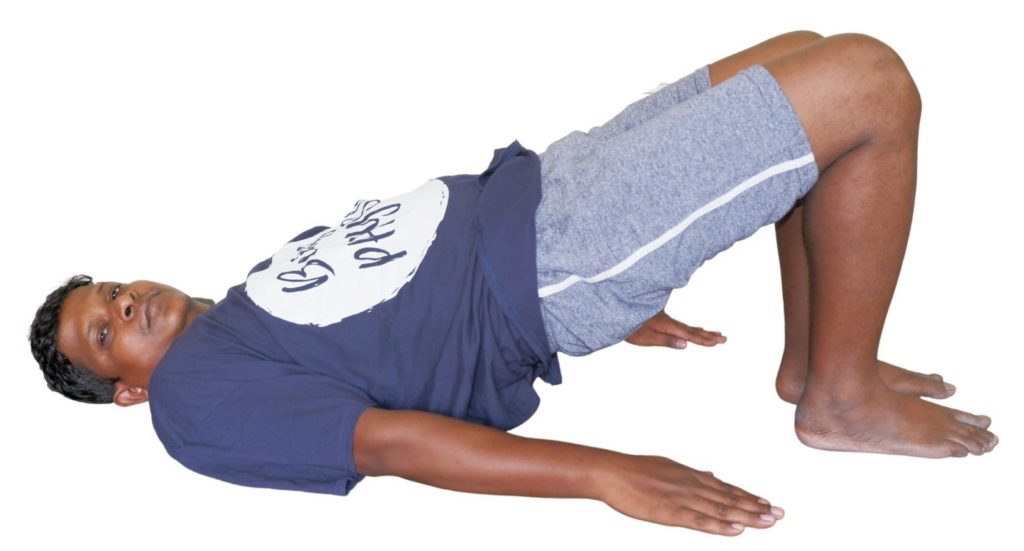
- For the bridging exercise, you must lie flat on your back, bend both your knees and keep your hands on the sides.
- In this position, slowly lift your hips. Lift as much as you can and hold for 5 seconds; the best way is to count from 1 to 5.
- Then, relax and lower it down to the normal position.
- Lift it again and hold for 5 seconds, then relax. Repeat this 15 to 20 times in a session; the more, the better it is.
2) Knee to chest exercise for lumbar anterolisthesis
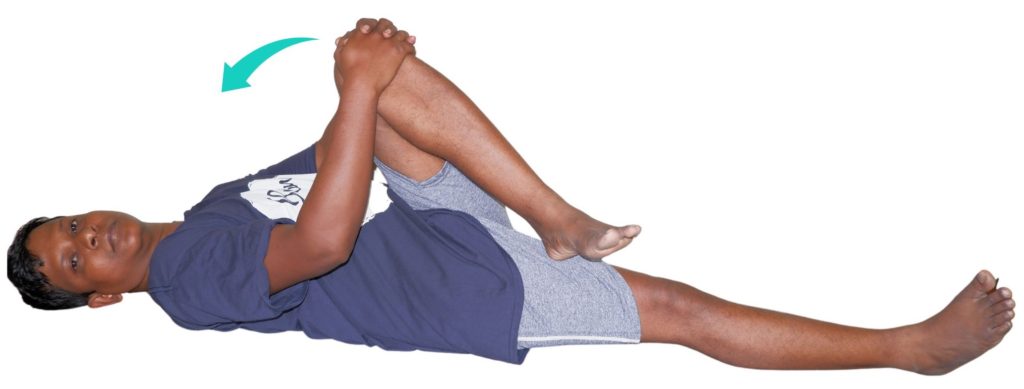
For the next exercise, we will be doing a knee-to-chest stretch.
- To begin, lie on your back with your knees bent and feet flat on the bed.
- Lift one leg and bring your knee towards your chest while holding onto the back of your thigh. You should feel a stretch on the back of your thigh.
- Hold this position for 10 seconds before relaxing.
- Repeat this exercise 10 times for each leg.
3) Glute stretching physical therapy exercises for spondylolisthesis
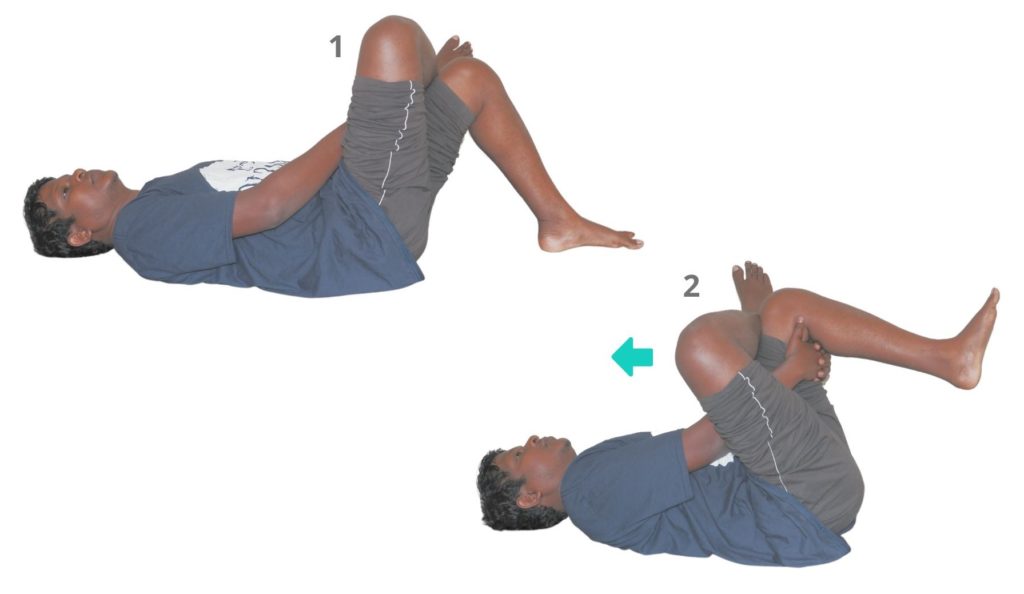
In the next exercise, we will stretch our glutes, the area around our buttocks.
- Start by keeping one leg straight and bending the knee of the side you want to stretch.
- Then, place your foot slightly above the knee of your other leg.
- Now, grab the knee with both hands and pull it towards your chest.
- Hold this position for at least 30 seconds.
- Remember to do a minimum of 3-4 reps in a session.
4) Bridging in side lying
For the next exercise, we will do something called Bridging in Side-lying.
- To get started, lie down on your side and ensure your hip is aligned with your trunk.
- Now, place your free hand on your hip and lift the hip as high as you can.
- Hold it for 5 seconds, counting 1-5, and then relax.
- Repeat this step 10 times on each side, left and right.
5) Bird dog spondylolisthesis exercise program
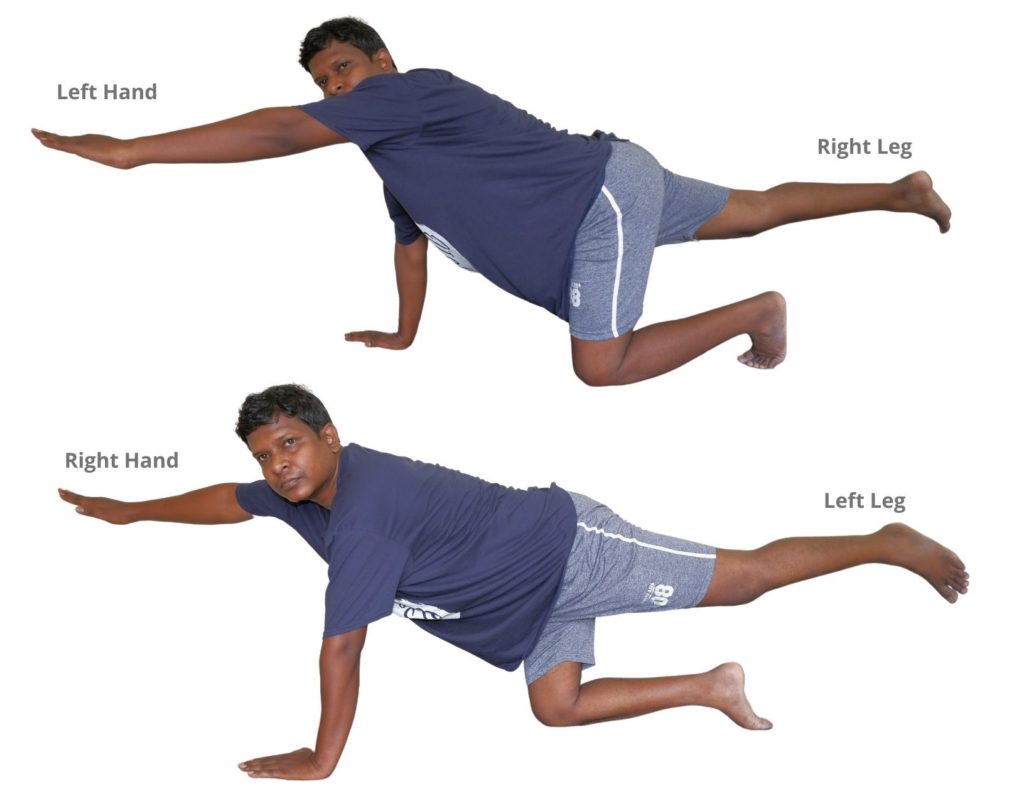
The next exercise is the Bird Dog Exercise, for which you must come to the quadruped position.
- In a quadruped position, lift your one hand and opposite leg straight. Let’s say if I lift my left hand straight, I’ll lift my right leg straight.
- Hold it for 5 seconds, then relax.
- Similarly, lift your right hand and left leg straight, hold for 5 seconds, and relax.
You can add some variation to this exercise. You don’t need to lift your hand; lift your leg. Keep the knee straight, hold for 5 sec and relax. This will strengthen our lower back muscles.
Do a minimum of 10 reps of both exercises on each side, which means 20 reps of each exercise.
Do both exercises on each side, which means ten reps on the left and ten on the right. This is a very effective exercise; I prescribe it for other low back pain conditions, too.
6) Cobra pose for spondylolisthesis treatment

The cobra pose is a yoga pose that involves lying flat on your stomach and lifting your chest and upper body off the ground using your arms.
As you lift your chest, you also lift your head and shoulders, creating a gentle backbend. This exercise is great for strengthening the muscles in your back and shoulders.
- To get started, lie flat on your stomach with your hands on the ground beside your shoulders.
- Slowly press your hands into the ground and lift your chest, keeping your elbows close to your sides.
- Hold this position for a few breaths, then slowly lower yourself to the ground.
- Repeat this exercise 10 times, breathe deeply and stay relaxed throughout the movement.
Final take
If you have a low grade of Listhesis, the exercises below will be effective and help alleviate pain. However, if your condition is more severe and has slipped further, surgery may be necessary.
Your surgeon will determine the grade of your condition and advise you on whether or not surgery is required.
In addition to these exercises, visiting a physiotherapist can be beneficial as they can manually mobilise your spine and work on bringing it back into position.
Traction, which pulls the spine, can also be helpful. Therefore, I recommend visiting a physiotherapist in addition to performing these exercises.
Keep Reading: Recommended Knee Cap for Knee Pain & Back Pain Belt from Agaro
The author is a physiotherapist who has been practising for the last 17 years. He holds a Bachelor's in Physiotherapy (BPT) from SVNIRTAR (Swami Vivekananda National Institute of Rehabilitation and Research), one of the prestigious physiotherapy schools in India.
Whatever he learns dealing with his patient, he shares it with the world through blogs and e-books. He also owns a YouTube channel, "Sunit Physiotherapist" with over 8 lakh active subscribers. Here, he shares everything he gets to learn serving the patient.
